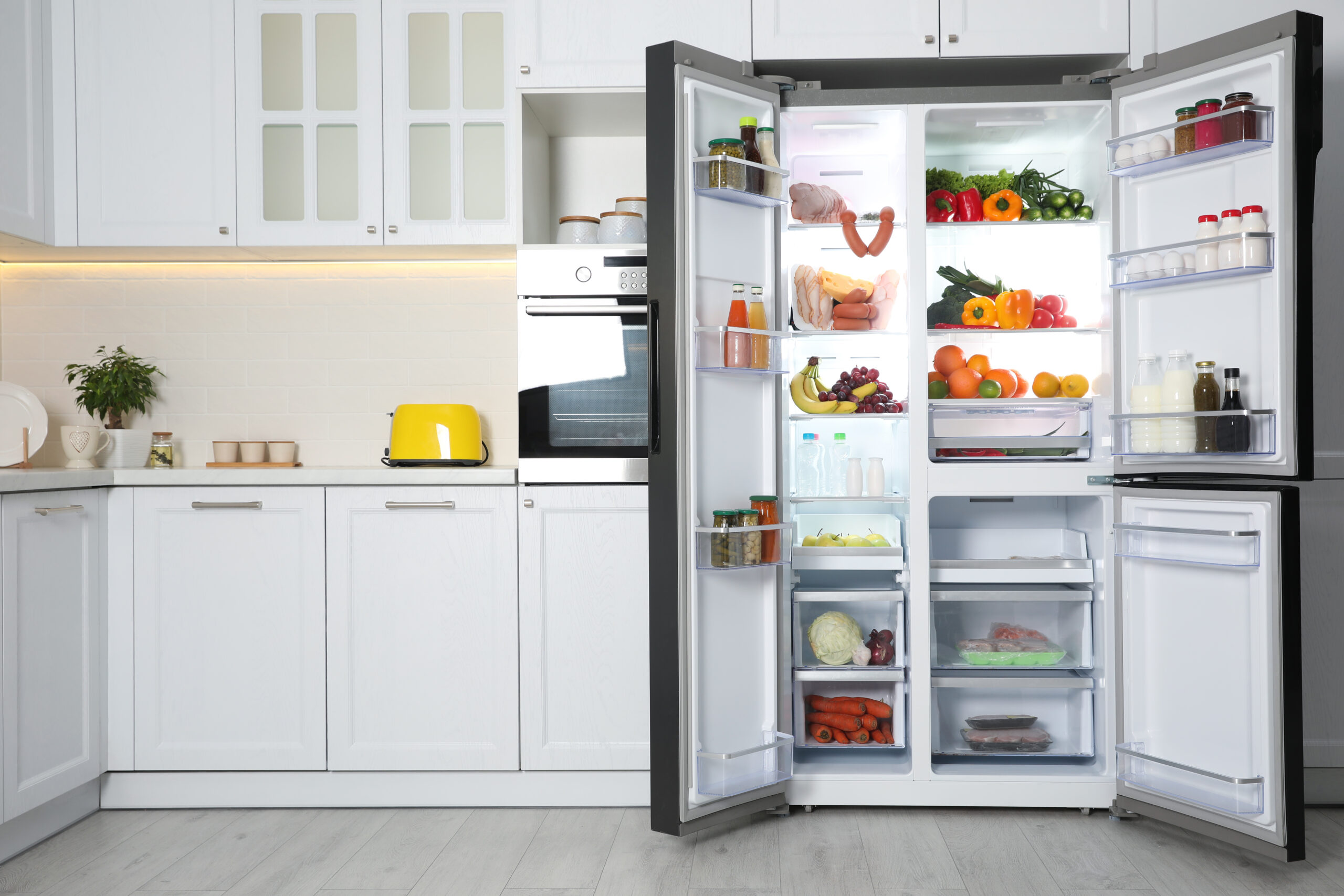Unlocking the Secrets of Your Fridge: How It Keeps Your Food Fresh
Have you ever pondered what magic happens inside your refrigerator to keep your food fresh? It’s not just a box of cold air; it’s a marvel of modern engineering. In this article, we’ll demystify the workings of a refrigerator, exploring its essential components and the science behind its cooling prowess.
The Refrigeration Cycle: A Symphony of Cooling
The refrigeration cycle is a fascinating process that turns a common household appliance into a food preservation device. Let’s break down this cycle into its core stages, explaining each in a way that’s technically sound yet understandable.
- Compression of the Refrigerant: The cycle begins in the compressor, a component that takes in refrigerant gas, such as R1234yf or 2.3.3.3.-Tetrafluropropene at a relatively low pressure. The compressor then does exactly what its name suggests – it compresses the gas. This compression raises the pressure and temperature of the gas significantly. Think of it like squeezing a balloon – the more you squeeze, the more pressure builds inside.
- Heat Release in the Condenser: Next, the hot, high-pressure refrigerant travels to the condenser. Here, the refrigerant, which is still in a gaseous state, releases its heat to the surrounding air. This is why the back of your fridge feels warm. As the refrigerant loses heat, it undergoes a phase change and turns into a liquid. This transformation is what makes the next phase, the cooling phase possible.
- Pressure Drop and Cooling in the Expansion Valve: The liquid refrigerant then moves to the expansion valve. This valve acts like a traffic controller, regulating the flow of refrigerant into the evaporator. As the refrigerant passes through this valve, its pressure drops dramatically. This sudden pressure reduction cools the refrigerant, a bit like how a can of compressed air feels cold when you spray it. When a gas undergoes a sudden pressure drop like this, it does “work” to the surroundings, and if no external energy is supplied, like heat, the energy from this work comes from the internal energy of the gas itself. As a result, the temperature of the gas decreases. This is known as an endothermic process. Some gases contain more endothermic properties than others based on their molecular structure, and these are selected as refrigerants.
- Absorbing Heat in the Evaporator: Now in a cool, low-pressure state, the refrigerant enters the evaporator. Inside the evaporator, which is in the main part of your fridge, the refrigerant absorbs heat from the interior. This absorption process causes the refrigerant to evaporate (turn back into a gas), pulling heat away from the air in the fridge and thus lowering the temperature. It’s similar to how sweating cools your body – as the sweat evaporates, it takes heat away from your skin.
- Returning to the Compressor: Finally, the now warmed, low-pressure gaseous refrigerant returns to the compressor, and the cycle starts all over again. This continuous loop keeps your food cold and fresh.
In essence, the refrigeration cycle is a continuous loop of compression, condensation, expansion, and evaporation. It’s a brilliant application of physical principles, harnessing the properties of the refrigerant to transfer heat from inside the refrigerator to the outside, keeping your food perfectly chilled.
The Compressor: The Powerhouse
The compressor in a refrigerator is often compared to the heart in the human body, vital for the appliance’s functionality. This component’s primary role is to circulate refrigerant, the lifeblood of the cooling system, throughout the refrigerator.
When the refrigerant, typically a hydrofluoroolefin (HFO) in modern refrigerators, enters the compressor, it’s in a low-pressure, gaseous state. HFOs are the latest in refrigerant technology, chosen for their lower environmental impact compared to their predecessors, hydrofluorocarbons (HFCs). The compressor then does its crucial work: it compresses the HFO refrigerant, increasing its pressure and temperature. This transformation is essential for the refrigeration cycle, as it prepares the refrigerant to release heat in the condenser, the next stage of the cycle.
The compressor’s job, however, extends beyond mere compression. It’s also responsible for ensuring the continuous and efficient movement of the refrigerant through the system. This movement is critical for maintaining a consistent cooling effect inside the refrigerator.
Advancements in compressor technology, such as the development of inverter compressors, have significantly enhanced refrigerator efficiency. These modern compressors can adjust their speed according to the cooling demand, leading to energy savings and reduced wear and tear, thereby extending the refrigerator’s lifespan.
Moreover, the compressor plays a significant role in determining the refrigerator’s noise level and energy consumption. The push towards quieter and more energy-efficient compressors is a testament to the ongoing innovation in refrigerator design, with a growing focus on sustainability and user experience.
The Condenser: Releasing the Heat
As the hot, pressurized refrigerant moves through the condenser coils, usually located at the back of the fridge, it loses heat to the surrounding air and condenses into a liquid.
The Expansion Valve: Pressure Reducer
The liquid refrigerant then passes through the expansion valve, where its pressure drops dramatically, cooling it further and preparing it for the next phase.
The Evaporator: Absorbing Warmth
In the evaporator, the cold refrigerant absorbs heat from the fridge’s interior, cooling your food. As it absorbs heat, the refrigerant evaporates back into a gas, returning to the compressor to repeat the cycle.
Understanding Refrigerants: The Cooling Agents
Refrigerants are the lifeblood of the refrigeration cycle. These substances, typically hydrofluoroolefins (HFOs), have unique properties that allow them to change states at convenient temperatures, facilitating the heat exchange process.
The Role of Thermostats: Maintaining the Chill
A thermostat monitors the temperature inside the fridge, turning the compressor on and off to maintain the desired coolness. It’s the brain of the operation, ensuring your food stays fresh and safe.
Energy Efficiency: Maximizing Performance
Modern refrigerators are designed to be energy-efficient. Innovations like inverter technology allow compressors to operate at variable speeds, reducing energy consumption without compromising cooling efficiency.
Maintenance Tips: Keeping Your Fridge Happy
To ensure your refrigerator runs efficiently:
- Clean the Condenser Coils: Dust and debris can impede heat transfer.
- Check Door Seals: A tight seal keeps the cold air in.
- Organize Your Fridge: Proper airflow is key to even cooling.
Conclusion
Understanding how your refrigerator works is not just about satisfying curiosity; it’s about appreciating the technology that keeps our food safe. With this knowledge, you can make informed choices about its use and maintenance, ensuring this unsung hero of the kitchen continues to perform at its best.
Remember, the refrigerator is more than a cooling box; it’s a testament to human ingenuity in preserving the freshness and longevity of our food. So, the next time you reach for that crisp apple or cold beverage, give a nod to the remarkable science that made it possible.




